Music greeted us as we wandered through the old city of Acre (Akko), on the Mediterranean coast in northern Israel. We found ourselves at the water’s edge on our first evening in the city listening to someone playing the bagpipes and another a drum, young men dancing and families clapping. It was a great atmosphere!
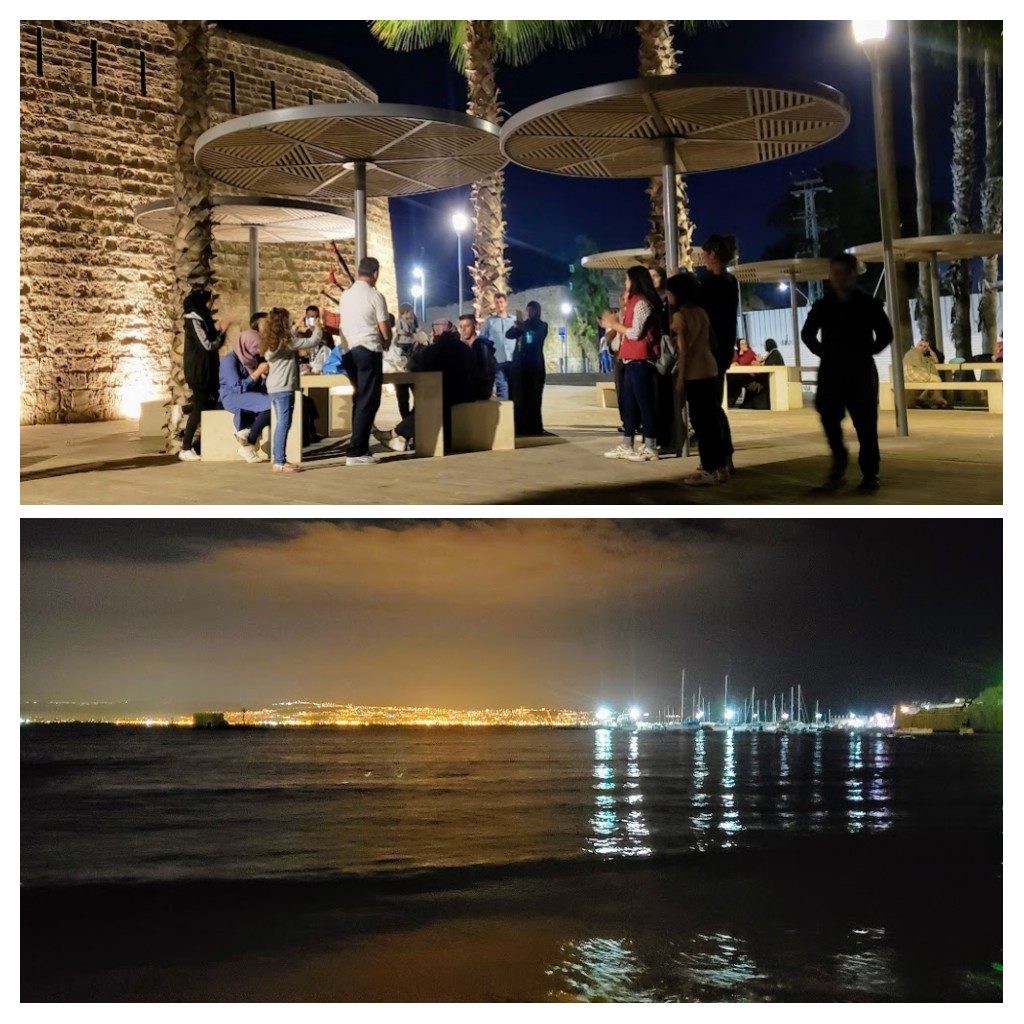
The Old City of Acre was declared a UNESCO World Heritage site for its substantial preservation of Medieval Crusader buildings and the 18th and 19th century Muslim town which lies above. We enjoyed wandering around the walled old city – above and below ground, through small streets, tunnels and old arched passages. The city retains much of the original structure and layout, with little change having been made over the last 300 years.

Acre was captured by the Crusaders in 1104 and was an important and fortified city during the Crusader era. The Crusaders made Acre their chief port in the Kingdom of Jerusalem. Not only did it allow the Crusaders to advance into the Levant, but it was a really valuable trade port. By 1170 Acre was the main port of the eastern Mediterranean and made the Kingdom enormously wealthy. After the fall of Jerusalem, Acre served as the defacto capital in the Holy Land from 1192.
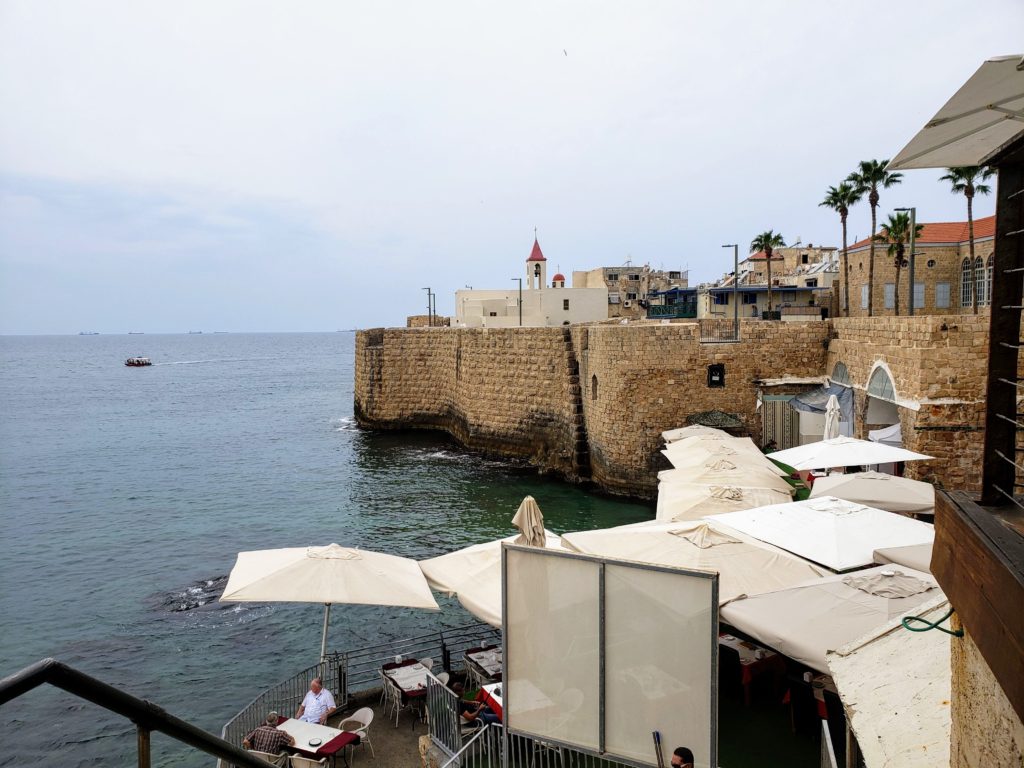
We visited the site of the Fortress of the Order of the Knights of the Hospital of Saint John – aka the ‘Hospitallers’ who were based in Acre until the Muslim conqest of 1291 when the Mameluke sultan destroyed much of the city. Over the ruins of the fortress, the Ottoman Turks in the 17th and 18th centuries, reconstructed the fortress, building the Citadel and Palace of the Governors of Akko. In the mid 19th century the Ottoman authorities added a large prison here. Under the British Administration (1918-1948) these buildings served as Government offices and were the largest prison in Palestine.
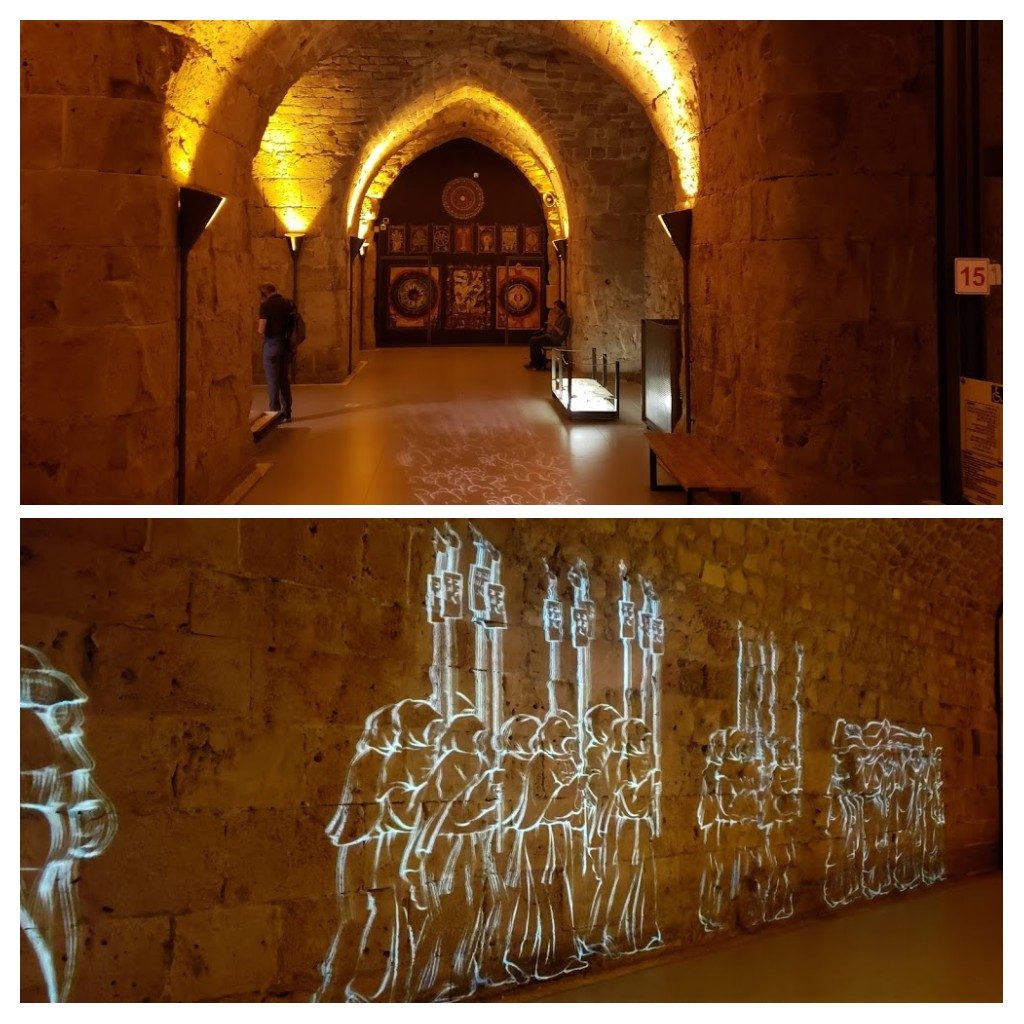
Walking around underground in what was the Crusader fortress we saw graves of bishops from the 1200s, arches, sugar mills, gateways and modern lightshows projected onto the 900 year old walls to help illustrate the history. We even saw the hall where the Crusaders went to the toilet!
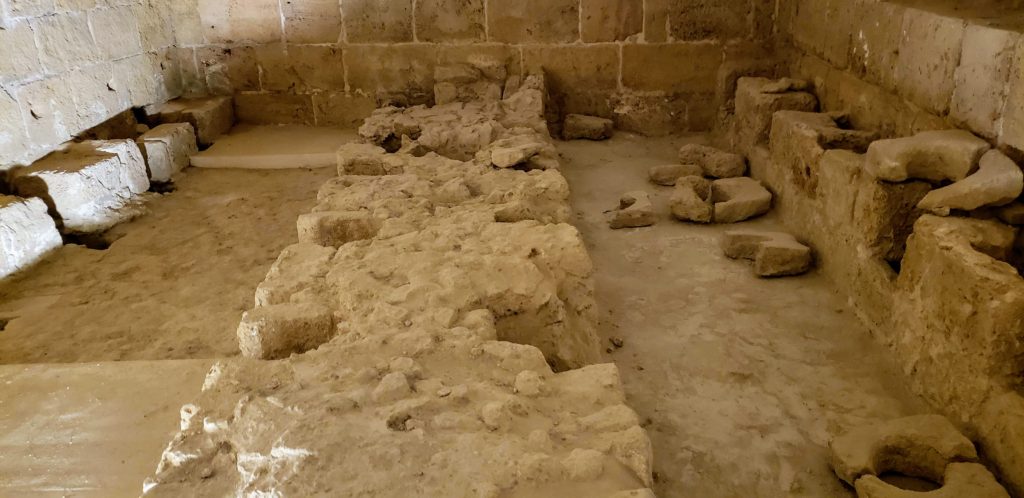
The most impressive room was the aptly named ‘Magnificent Hall’ which served as the refectory for the members of the Hospitaller order. They all would have eaten there, from the head of the order to the most junior soldier, complying with the order’s strict rules that they must eat together, all eat the same food and noone must leave the table until all have finished eating.
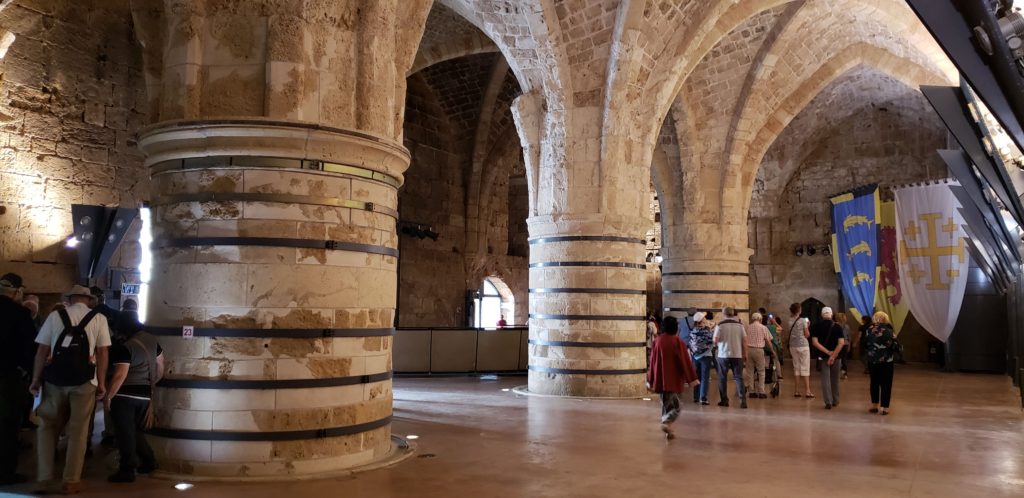
By constructing their city on the Crusader city the Ottomans preserved what remained of the Crusader city. It was great to walk through these underground buildings, exploring the history of Acre, via well laid out information boards and animated projections on the walls and screens.
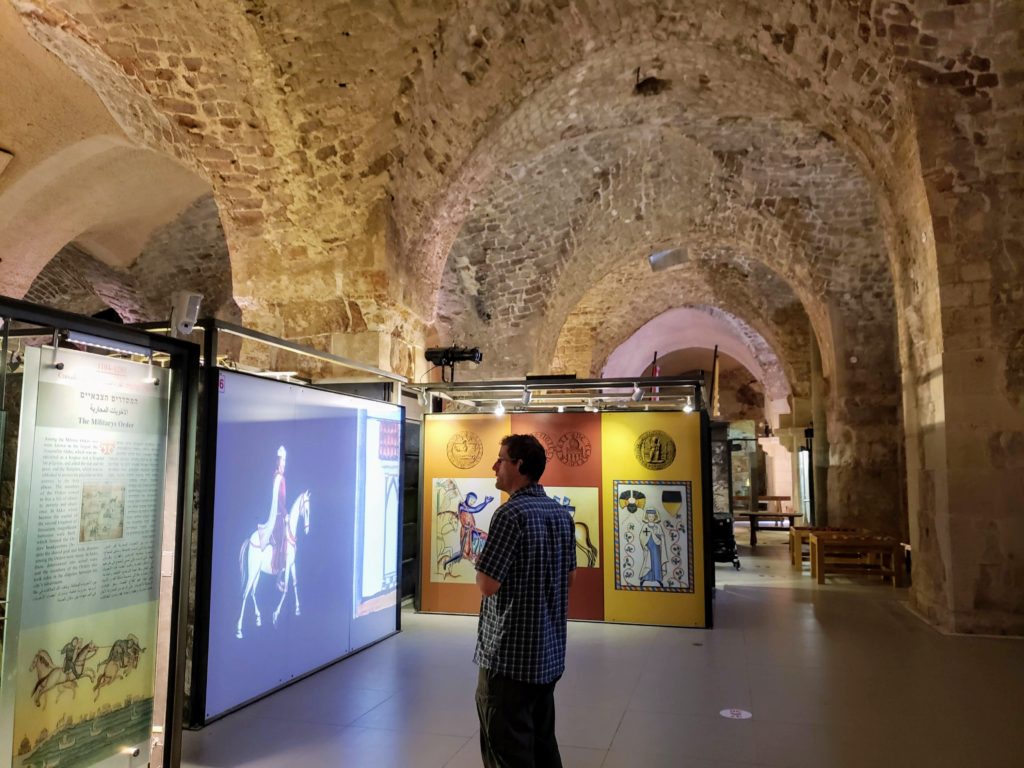
After a long period of neglect, the city again became attractive late in the Ottoman period. Even Napoleon attempted an attack here (1799) but was repelled by Ahmad Pasha Al-Jazzar, who the Al Jazzar mosque is named in honour of. We didn’t go inside the mosque but the entrance way was quite beautiful and it’s the largest mosque in Israel, outside Jerusalem.
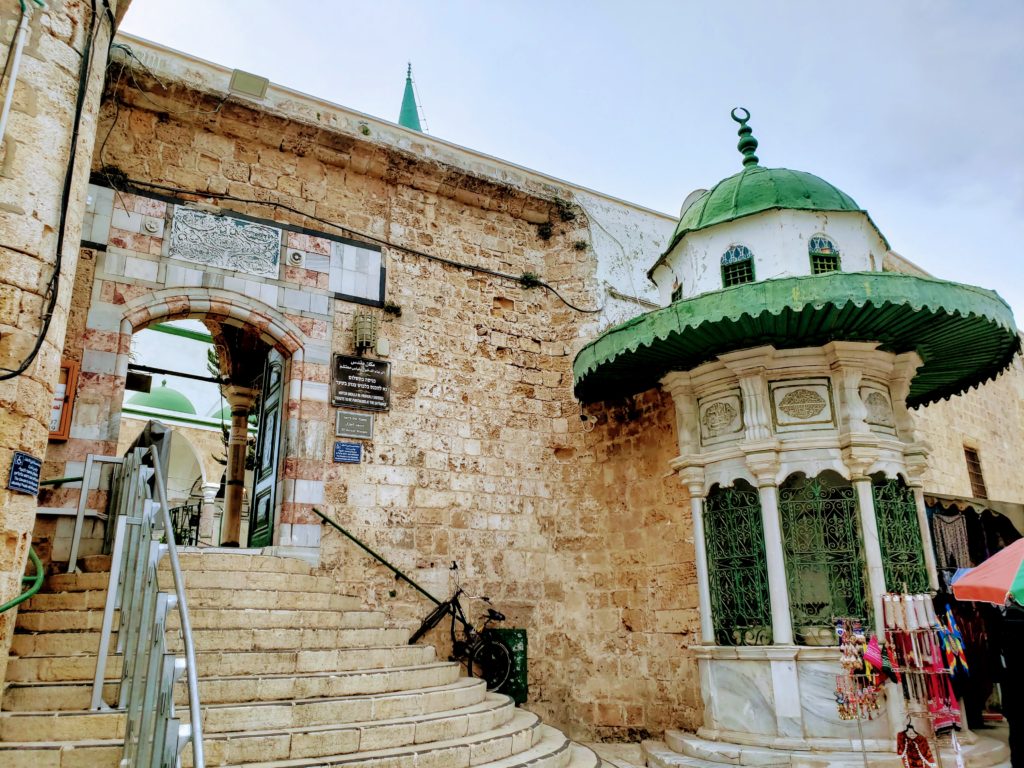
The Al Jazaar mosque seems to sneak into many of my photos as it’s in the centre of the old city so can be seen from all over. Also built during Al Jazzar’s rule was the Khan el-Omdan, built in 1784. Located near the port this ‘inn of pillars’ was an important trading spot and caravansarai. Later it was used by the Bahai founder Baha’ullah to welcome guests and then it became the site of a Bahai school. In 1906 the clock tower was added to it.
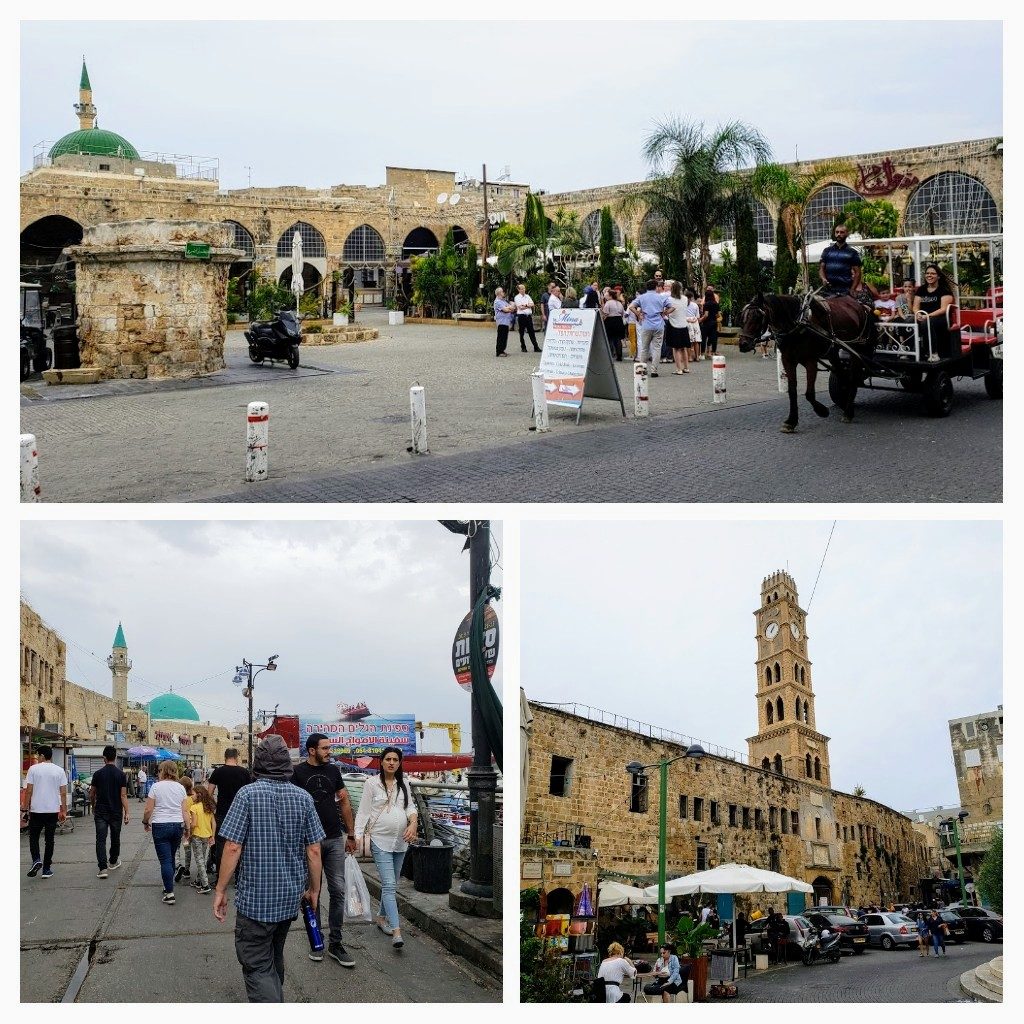
Part of our Old City wanderings took us through the Templars’ tunnel. After 500 years hidden underground, a local plumber discovered it in 1994. The 150m long tunnel extends from the Templars fortress to the city’s old harbour. The strategic underground passageway connected the palace to the port and was likely constructed as an escape route in times of attack.

Having wandered the streets above ground and explored the city underneath, before we left the area we headed up on the city walls to get a different perspective of the city. From there we could see church towers and mosque minarets, a good mix of buildings and out to sea.
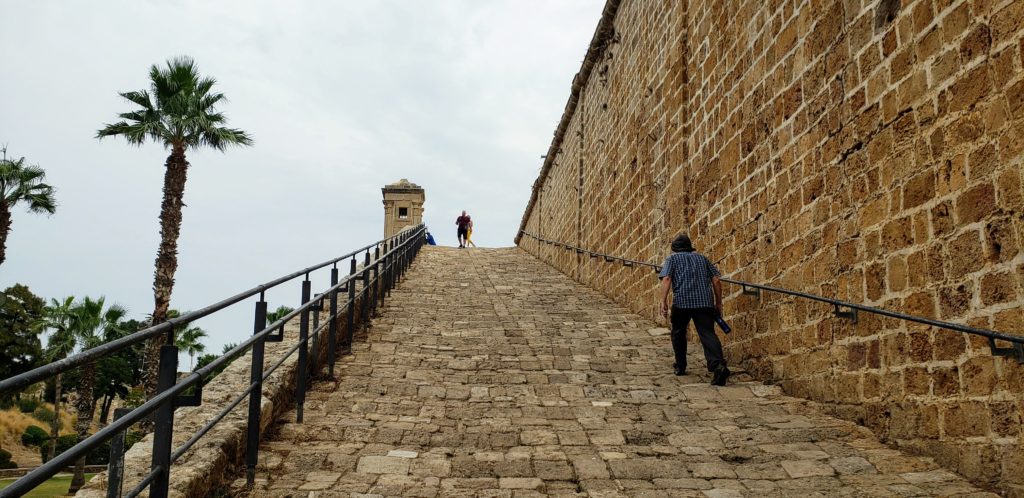
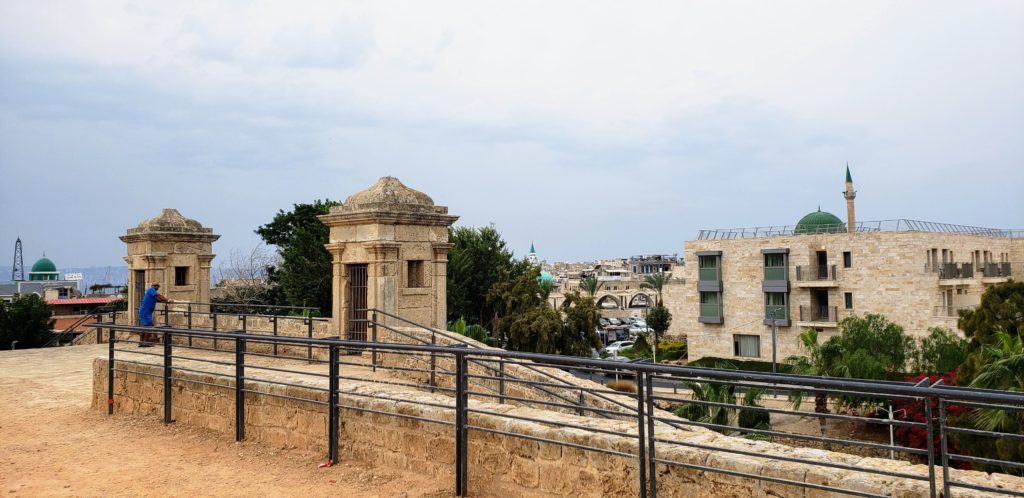
These outer walls were initiated by Al-Jazaar after Napolean’s attack and withdrawl. Today the northeastern wall hosts the ‘Treasures in the Wall’ museum. The original stone halls are a great setting for the many historical objects on display, showing furniture from the city’s well-to-do and displays about the craftsmen who worked in the markets here. We just had a quick look around as we were a bit museumed out after the visit to the citadel earlier. But it was a really lovely little museum with some nice things on display, especially if you are interested in arts, crafts and furniture.
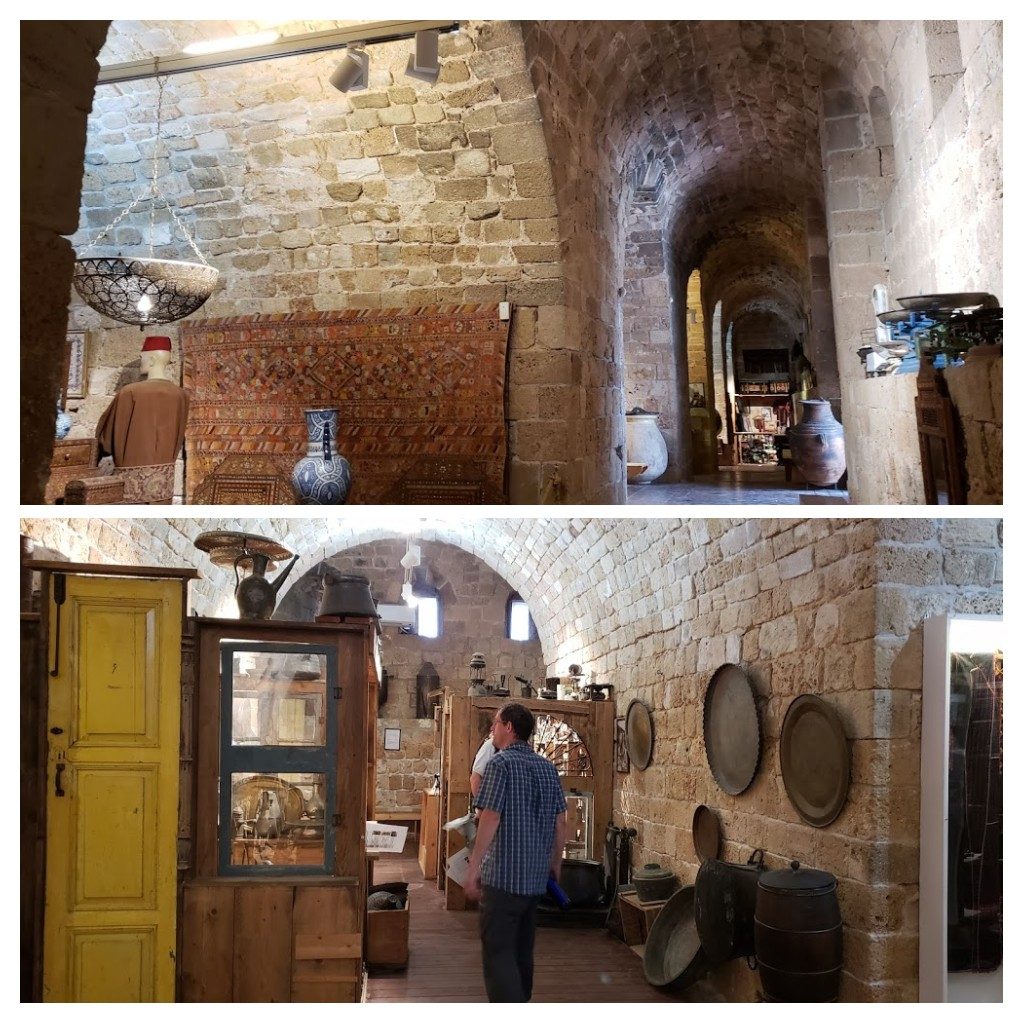
Aside from the Old City, the other main thing to see in Acre is the Shrine of Baha’u’llah, founder of the Bahai faith, and the Gardens that surround the shrine.
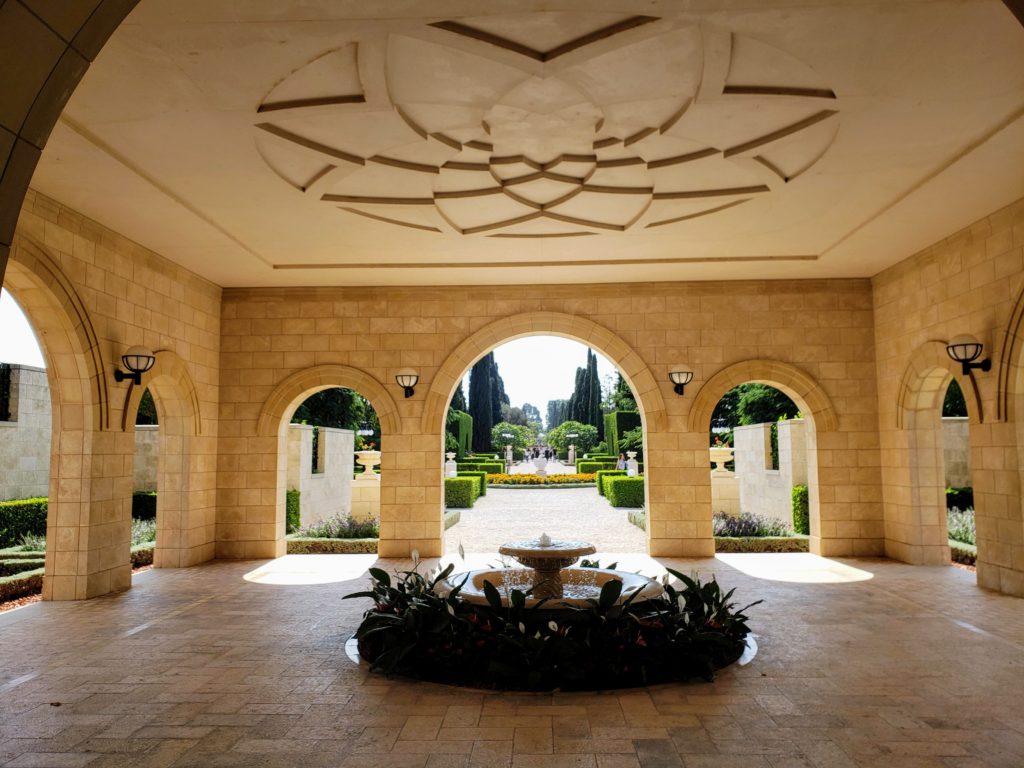
Bahais believe that their founder is the most recent in a line of ‘Messengers of God’ that includes the founders of the world’s major religions. His message was one of unity, teaching that there is only one God, one human race and that all the world’s religions have been progressive stages in the revelation of God’s will and purpose for humanity.
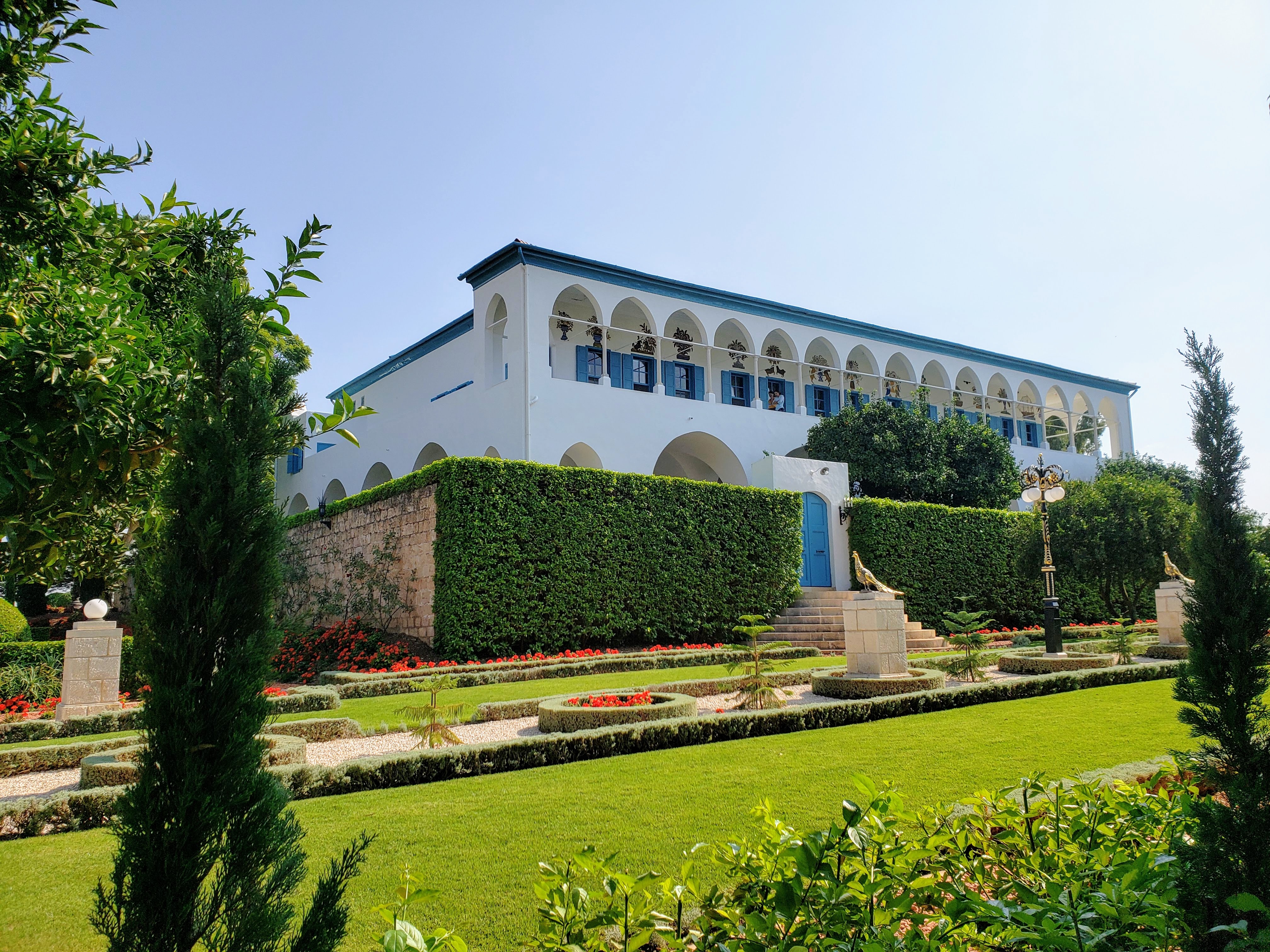
Mirza Husayn-Ali (1817-1892) was a Persian nobleman who took the title Baha’u’llah meaning ‘The Glory of God’ in Arabic. Because of his religious teachings he was imprisoned and banished from Persia with his family and a small group of followers. They arrived in Acre in 1868, then a prison-city under Ottoman rule, condemned to perpetual confinement. After nine years living in the walled city he moved to a country home then nearby estate called ‘Bahji’ meaning delight. Bahau’llah lived here from 1879 until his passing in 1892. He is buried in a small building next to this one.
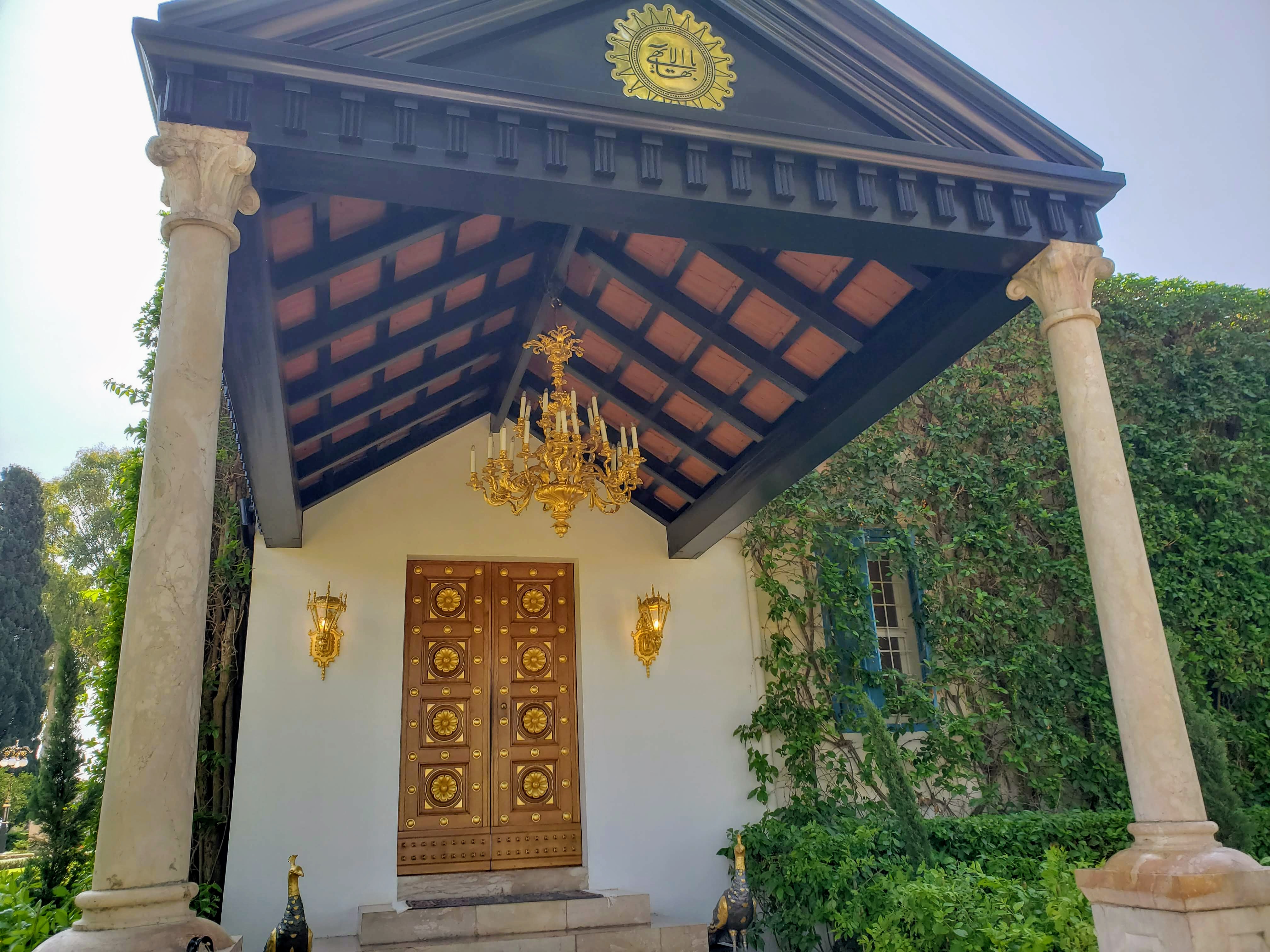
For Bahai, this shrine where Baha’u’llah is buried is the most holy place in the world. Bahais turn toward this point in prayer. We were allowed to go inside, with a bahai volunteer who first explained a little about the shrine and gardens. He walked silently and solemnly in and around the shrine and we followed, shoes off, no photos allowed. It was simple and beautiful with plants the main beautifying element. Then we explored the surrounding gardens which have been added over the years. The guide made clear that there was no symbolism in any of the beautification – in the shrine or gardens. Things were simply chosen for their beauty.
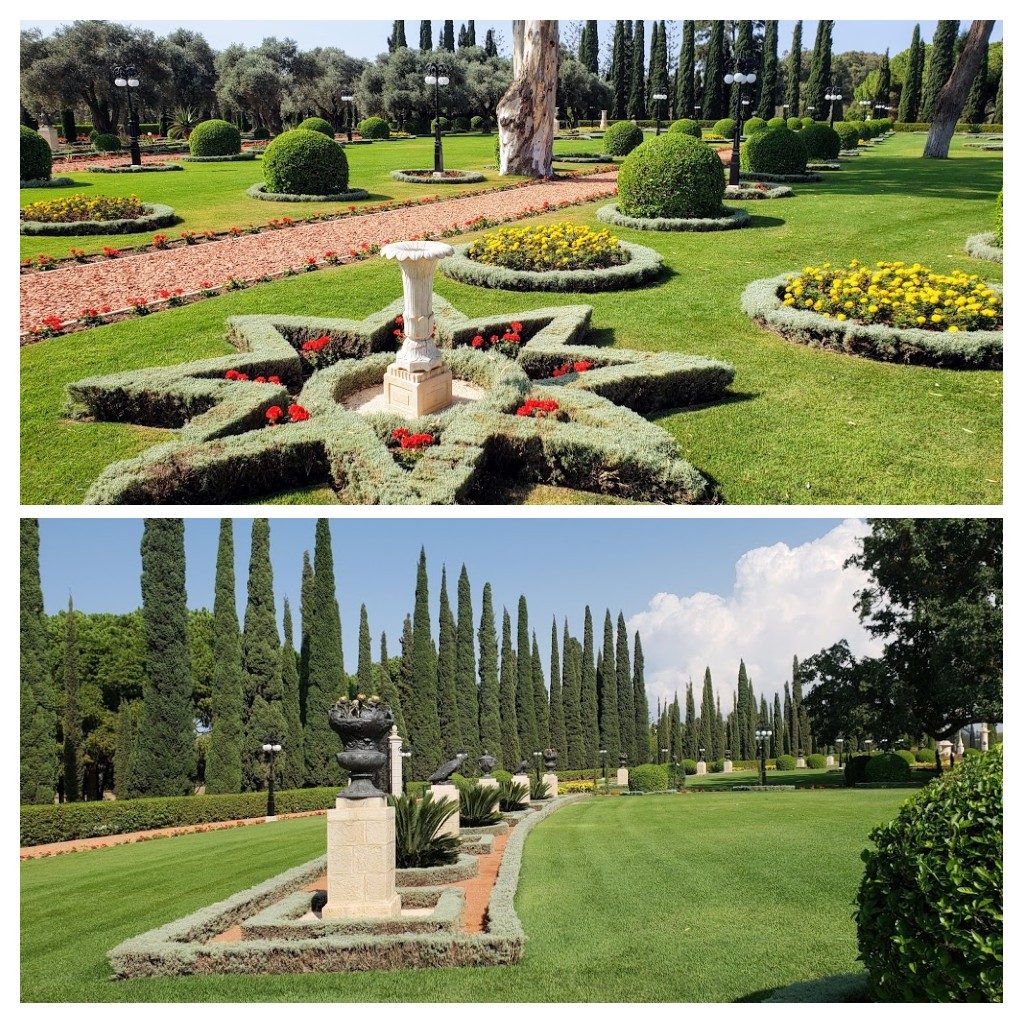
We stayed in Acre a couple more days, using it as a base to explore the ancient seaside town of Caeserea and the port city of Haifa.